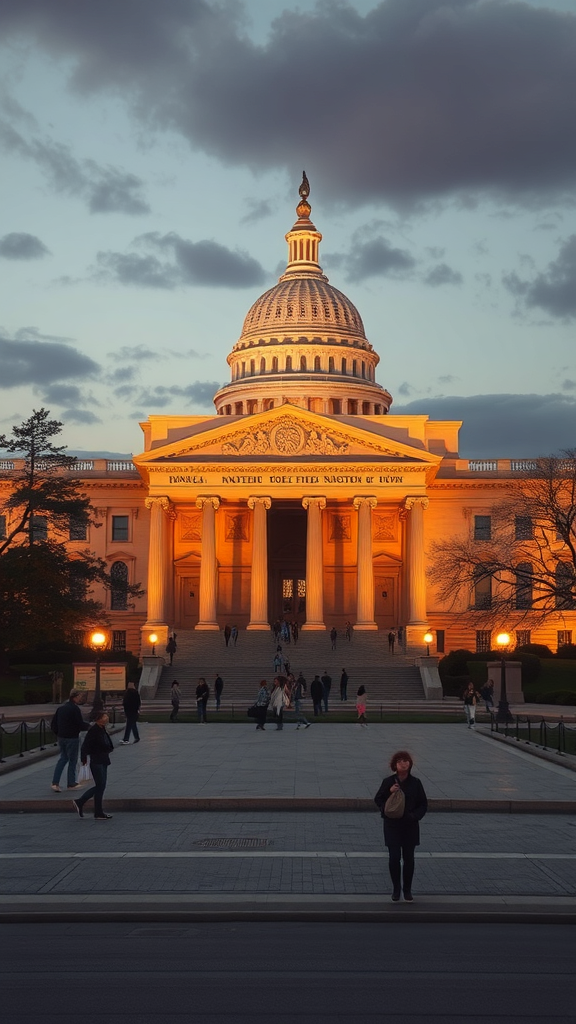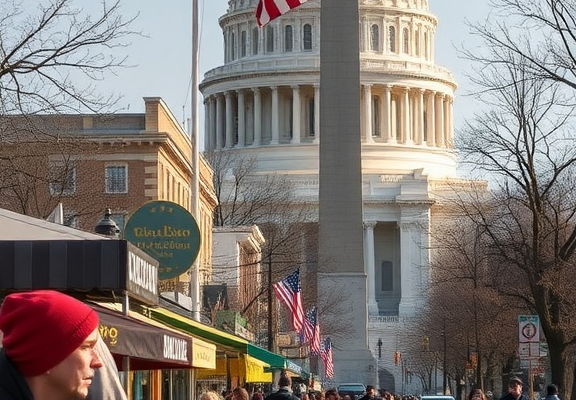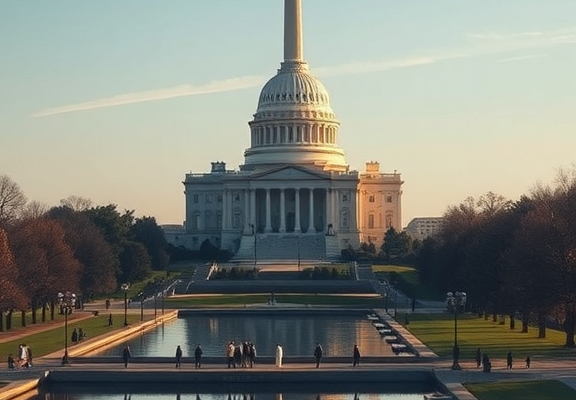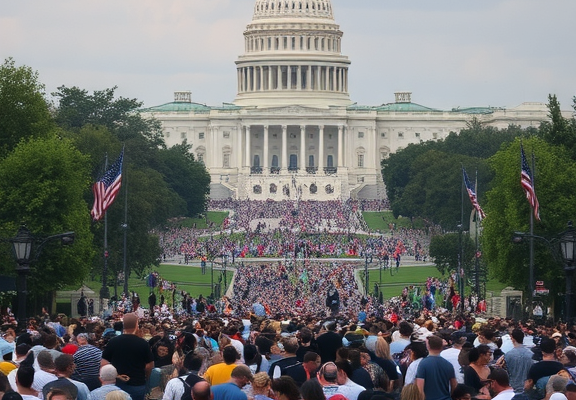Washington Trip Clarity: Maximizing Energy with Time-Blocking to Combat Midday Museum Fatigue
When planning a trip to Washington, D.C., you might dream of exploring the city’s captivating museums, art galleries, and historical landmarks. However, as you meander through the exhibits, you may encounter a common enemy known as midday museum fatigue. This sensation can creep up on you, leaving you feeling drained and distracted as the day progresses. One effective strategy to combat this is to use time-blocking by energy levels. This approach allows you to maximize your energy and ensure a more enjoyable experience during your Washington trip.
Thank you for reading this post, don't forget to subscribe!Understanding Museum Fatigue
Museum fatigue refers to the feeling of exhaustion that hits many visitors after a few hours of walking, reading, and absorbing information. Washington is home to an impressive range of institutions, such as the Smithsonian Museums and the National Gallery of Art, all offering educational and cultural experiences. However, touring multiple museums in one day without proper planning can lead to burnout, diminishing your ability to appreciate the exhibits fully.
Why Time-Blocking Works
Time-blocking is a technique that helps you allocate specific periods for activities based on your energy levels. Instead of scheduling your visit randomly, blocking out time according to your physical and mental stamina can make a significant difference. Here are some key steps to making this method effective:
- Assess Your Energy Levels: Pay attention to how you feel throughout the day. Are you more alert in the morning or energized after lunch? Noticing your peak times will allow you to plan visits accordingly.
- Prioritize Museums: Map out which museums matter most to you. While it’s tempting to cover as many as possible, focusing on a select few can prevent overwhelming fatigue.
- Schedule Breaks: Integrate intentional breaks into your museum tours. A short break to sit and refresh can actually boost your overall stamina for the day.
Creating Your Time-Blocked Itinerary
Using time-blocking can help structure your museum visits with purpose. Here’s how to sketch out your itinerary:
Morning Energy (9 AM – 12 PM): Aim to visit the museums that require deep thinking or attention first. This is where your mind is fresh, making it ideal for examining intricate exhibits. The National Air and Space Museum is a gripping choice, full of incredible stories and displays that spark wonder.
Midday Recharge (12 PM – 1 PM): Break for lunch at a nearby café or food truck. This is an ideal time to step outside, breathe fresh air, and hydrate. Eating nutritious food will restore your energy levels for the next round of exploration.
Afternoon Activities (1 PM – 4 PM): After recharging, visit lighter exhibits. Engage with art at the Hirshhorn Museum and Sculpture Garden or take a moment to appreciate contemporary works. This shift allows for creative fluidity while avoiding overwhelming responses to heavy historical content.
Evening Reflection (4 PM – 6 PM): If you still have energy, wrap up your day at a museum with broad appeal, like the National Museum of Natural History. The more relaxed atmosphere will offer a pleasant end to your adventures without excessive mental strain.
Additional Tips for a Pleasant Museum Experience
Beyond time-blocking, consider these extra tips to enhance your visit:
- Stay Hydrated: Carry a water bottle. Dehydration can contribute to fatigue, making breaks for hydration a key part of your plan.
- Engage Your Interest: If you find a specific exhibit particularly captivating, allow yourself additional time. Flexibility within your time blocks can enhance your experience.
- Plan Your Exit: It’s okay to leave a place if you are feeling too fatigued. Know your limits and prioritize your energy over strictly sticking to your itinerary.
By following a structured itinerary that accounts for energy peaks, you can enjoy a fuller, more rewarding experience during your Washington trip. Pre-planning your visits and infusing breaks will not only combat midday museum fatigue but will also allow you to soak in the rich arts and culture that the city offers. Embrace the clarity that comes with time-blocking and discover the marvels of Washington, D.C., without the fatigue weighing you down.
The Best Times to Visit Washington D.C. Museums for an Energized Experience
Visit Washington D.C. when you can enjoy its amazing museums while feeling fresh and energized. Planning your visit around the best times can make all the difference in your experience. Here’s how you can make sure your museum trips are revitalizing, not draining.
The trick to a satisfying visit is to understand your energy levels. Energy naturally fluctuates throughout the day, and by time-blocking your museum visits, you can beat that midday slump. Early mornings and late afternoons often provide a more dynamic experience. This schedule helps you enjoy exhibits without feeling rushed or overwhelmed.
Many visitors overlook the early morning hours. If you’re an early riser, this is the perfect time to explore. Most museums in Washington D.C. open around 10:00 AM. By arriving when doors open, you can beat the crowds and enjoy a calm atmosphere. During this time, you can have an immersive experience with fewer distractions. Take advantage of the quiet mornings to interact with docents or explore special exhibits more closely.
Late afternoons, particularly from 4:00 PM to 5:00 PM, also provide a refreshing option. Many visitors start to wind down around this time, especially during weekdays. This means that you can experience the museums with less foot traffic. You may even find that some exhibits come alive as you discover hidden details when fewer people are around. Plus, the atmosphere becomes more relaxed as vendors prepare to close up shop.
Timing isn’t the only factor to consider. You should also think about the days you plan to visit. Weekdays, especially Tuesdays and Wednesdays, tend to be less crowded than weekends. By going during these days, you can avoid long lines and get a more fulfilling experience. Make sure to check museum schedules online for extended hours and special events, as this information can help you avoid busy days.
The amount of time you spend in each museum can vary based on your interests. Here’s a quick guide to help you determine how long to stay at various types of exhibits:
- Art Museums: Consider at least 2-3 hours, allowing you to fully absorb the artwork without feeling rushed.
- History Museums: Aim for 3-4 hours to dive deep into the rich narratives and artifacts.
- Science Museums: Plan for 2-4 hours, taking time to interact with hands-on displays.
- Special Exhibits: Depending on their size and scope, one hour is usually sufficient.
Another essential element to your visit is when to take breaks. Even with a great plan, spending too much time on your feet can lead to fatigue. Consider timing your museum visits alongside snack or lunch breaks. This will keep your energy levels high. If you’re at the National Mall, you can step outside for a bit of fresh air and a light meal. Options abound, from nearby food trucks to picnic spots.
Additionally, look out for museum programming that often occurs during later hours. Some museums offer late-night openings or extended hours on certain days. This can transform your museum experience into a more lively atmosphere, adding an exciting edge to your visit. To gauge popular events, follow museums on social media or subscribe to their newsletters.
Don’t forget that every museum has its unique rhythm. Some days might be packed with school groups, while others are ideal for leisurely exploration. Flexibility is key! You might find that your preferred time isn’t as enjoyable as you hoped. Being open to adjusting your schedule can lead you to unexpected gems during your visit.
Taking a moment to consider your energy levels and your schedule can greatly enhance your Washington D.C. museum experience. Early mornings and late afternoons, combined with strategic day selections and timed breaks, can help you navigate through exhibits feeling energized. Planning your Washington trip clarity in this way will ensure that you maximize both enjoyment and learning without the stress of fatigue.
Conclusion
Planning a trip to Washington D.C. can be exhilarating, but managing your energy during museum visits is key to enjoying all that the city has to offer. By implementing time-blocking strategies, you can combat midday museum fatigue and ensure a more engaging experience. Prioritizing your most energetic hours for museum exploration allows you to soak in the rich history and stunning exhibits without feeling overwhelmed.
Understanding the best times to visit Washington D.C. museums will further enhance your outing. Early morning or late afternoon slots typically foster fewer crowds, allowing you to appreciate exhibits at a more leisurely pace. Avoid the rush during busy lunchtime hours to maximize your enjoyment and retain your energy levels.
By embracing these strategies, you’re not just filling your itinerary; you’re creating lasting memories with a sense of clarity and purpose. Each museum provides a unique story of American history and culture, and with a well-timed visit, you’ll absorb more information and inspiration.
Take the time to map out your day, aligning your museum visits with your peak energy levels. This approach not only fights fatigue but transforms your Washington trip into a more organized adventure filled with discovery. As you explore the museums, remember that a little planning goes a long way, ensuring each moment is packed with insight and excitement. Enjoy your journey through this vibrant city and all the treasures it holds!






